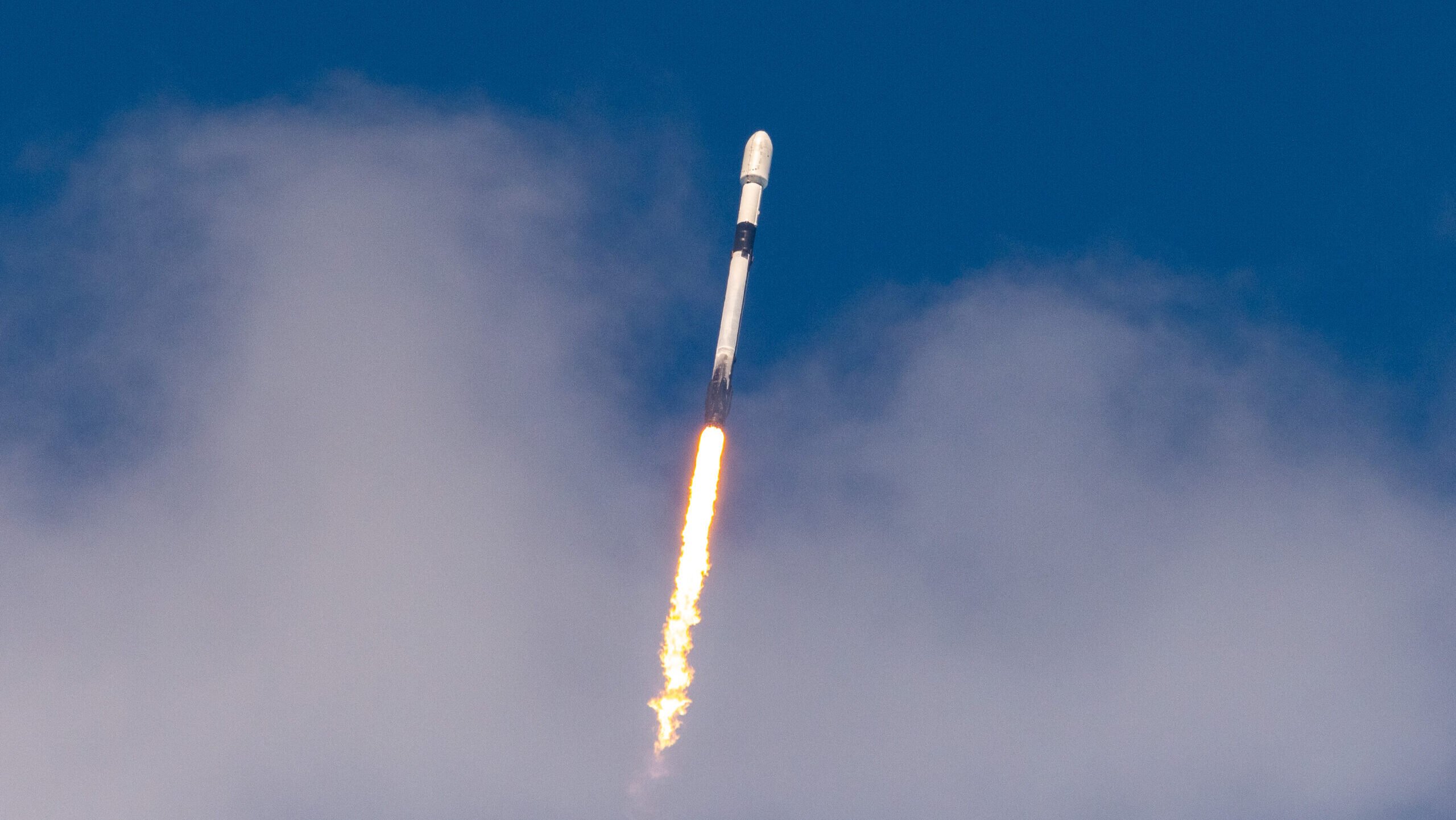
A Falcon 9 rocket launches from Space Launch Complex 40 at Cape Canaveral Space Force Station, Fla., March 9, 2023. OneWeb is a planned satellite constellation carrying micro satellites to provide world wide internet access for individual consumers and airlines. (U.S. Space Force photo by Joshua Conti)
America has invested billions in its space assets, but is the money going to all the right places? In this new op-ed, Masao Dahlgren of the Center for Strategic and International Studies argues that a system about to launch into orbit serves as a test case for how best to move forward.
In the coming days, the Department of Defense’s plans for a new missile-tracking satellite constellation will be put to the test. While today’s sensor-equipped satellites offer critical warnings of attacks, the forthcoming launch of the Hypersonic and Ballistic Tracking Space Sensor (HBTSS) will test satellites able to track missiles in flight and potentially guide interceptors.
Defenders can only intercept what they can detect. As adversaries strike population centers in Ukraine, target shipping in the Red Sea, and threaten Taiwan, the need for global missile-tracking sensor coverage has become apparent. Space-based sensors are a core enabler for next-generation missile defense; accordingly, the Space Force and its component Space Development Agency (SDA) have aimed to deploy over 135 satellites to track advanced missiles, investing nearly $5 billion in the past year.
But questions remain over the architecture’s configuration and relation to missile defense. For instance, while the forthcoming constellation will offer an unprecedented ability to track missiles in flight, only a handful of satellites will feature the high-fidelity, “fire control-quality” sensors for guiding interceptors — sensors like HBTSS. Despite considerable progress made, it is worth asking what could be accelerated.
Recent analysis has identified additional factors to consider. Changes to orbital configurations, for example, could enhance a future missile-tracking constellation’s coverage. While SDA has planned for “limited global access” in 2025 and “near-continuous global stereoscopic coverage” through 2027, it could take longer to achieve denser coverage of lower latitudes — where a potential conflict over Taiwan might be fought. It is a matter of orbital mechanics: The planned constellation of high-inclination orbits minimizes the numbers needed for global coverage but offers the thinnest redundancies near the equator. Moreover, these commercially-inspired designs only achieve persistent coverage when nearly all assets are deployed, offering little interim capability.
Future iterations of SDA’s satellite constellation might incorporate more satellites at lower inclinations, ramping capability smoothly and enhancing Indo-Pacific coverage. Indeed, in its revised solicitations, SDA aims to launch parts of its Tranche 2 constellation at lower inclinations, but the numbers remain small. While the vision for SDA’s late 2020s constellation remains in flux, prioritizing lower-latitude coverage has considerable promise. Doing so would better align with congressional direction to accelerate coverage of the Indo-Pacific region.
It will be equally crucial to deploy satellites in diverse orbits. Though it may seem efficient to consolidate to a single orbital regime, there are coverage and survivability advantages to mixing and matching. While SDA’s constellation achieves robustness through scale, medium Earth orbits (MEO), where GPS satellites reside, offer a unique vantage point for missile tracking, and geosynchronous orbits, derided for distance and cost, offer persistence unachievable at lower orbits. At minimum, Space Force efforts to deploy a 27-satellite MEO constellation should be sustained.
Above all, the Department of Defense must set clear goalposts for what these sensor constellations are meant to do. That mission set must include missile defense.
While current satellites provide early warnings of missile launches, it will be more challenging to track hypersonic missiles in flight, and even more so to provide the fire control-quality tracking prototyped in HBTSS. Public commitments to MDA/SDA sensor collaboration are a valuable reassurance amid congressional concerns that fire control requirements could be abandoned.
Verbal commitments must translate to hard reality. Though plans to launch six fire control satellites in 2027 are a welcome step, it will be necessary to build and deploy them at greater scale. At the very least, the Space Force should articulate a clear roadmap for fire control capability deployment, with options to achieve persistent, Indo-Pacific regional coverage before the 2030s.
The timelines are tight. As China pursues its military ambitions and North Korea grows its missile arsenal, the late 2020s will become especially dangerous. What the United States does in space matters for how it navigates this period; ongoing nuclear early warning and hypersonic missile interceptor efforts depend on getting the sensor architecture right. The details increasingly matter, and they cannot fly under the radar.
Masao Dahlgren is a fellow with the Missile Defense Project at the Center for Strategic and International Studies, where he writes on space, missile defense, and emerging technologies. He recently authored “Getting on Track: Space and Airborne Sensors for Hypersonic Missile Defense.”






















